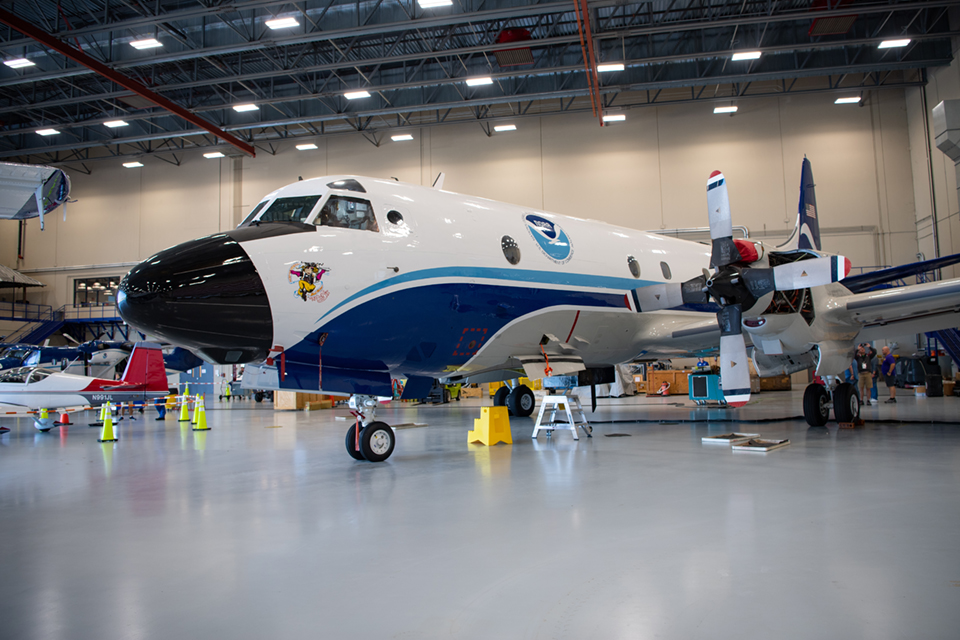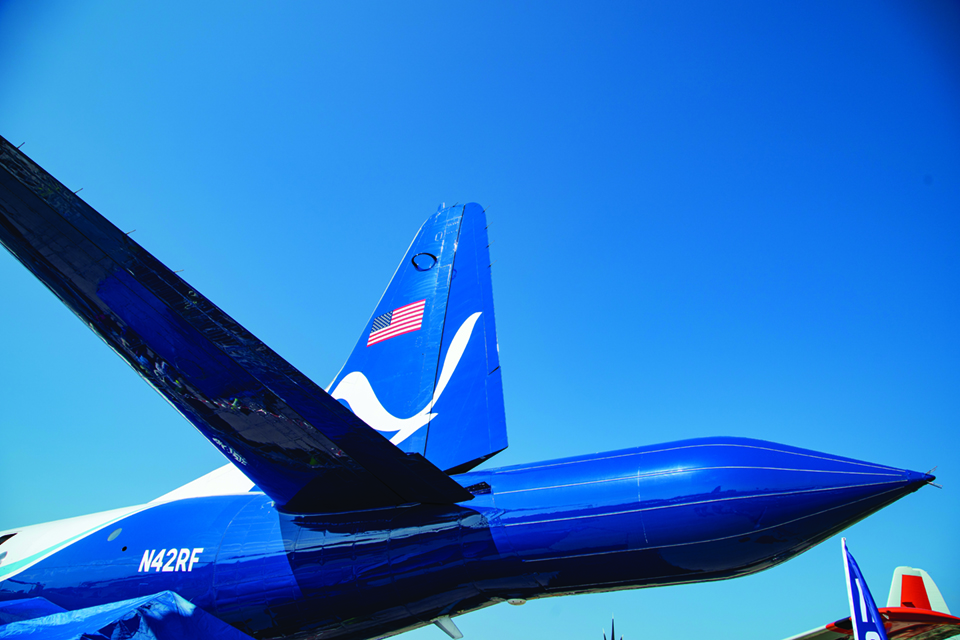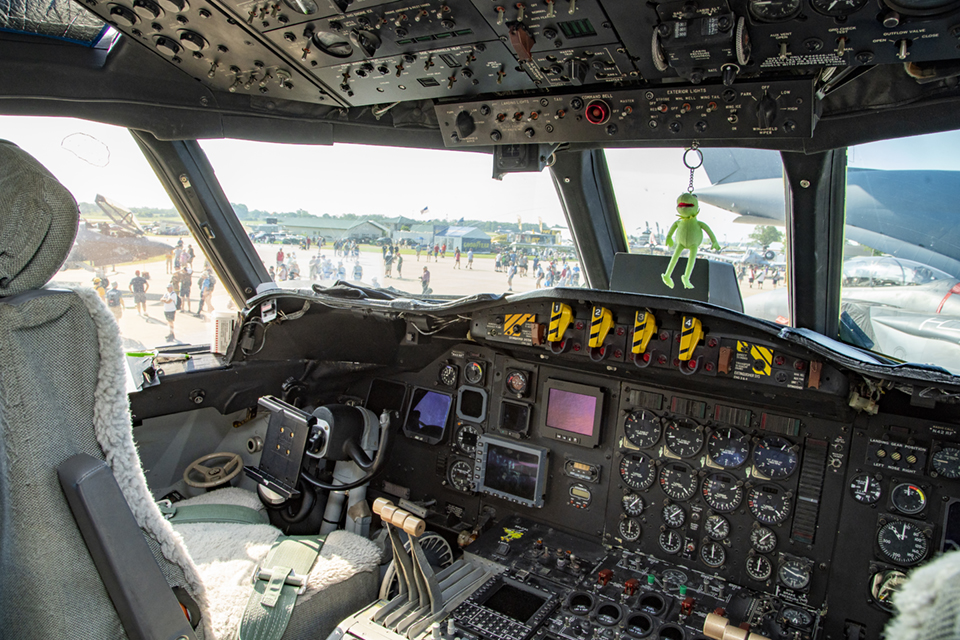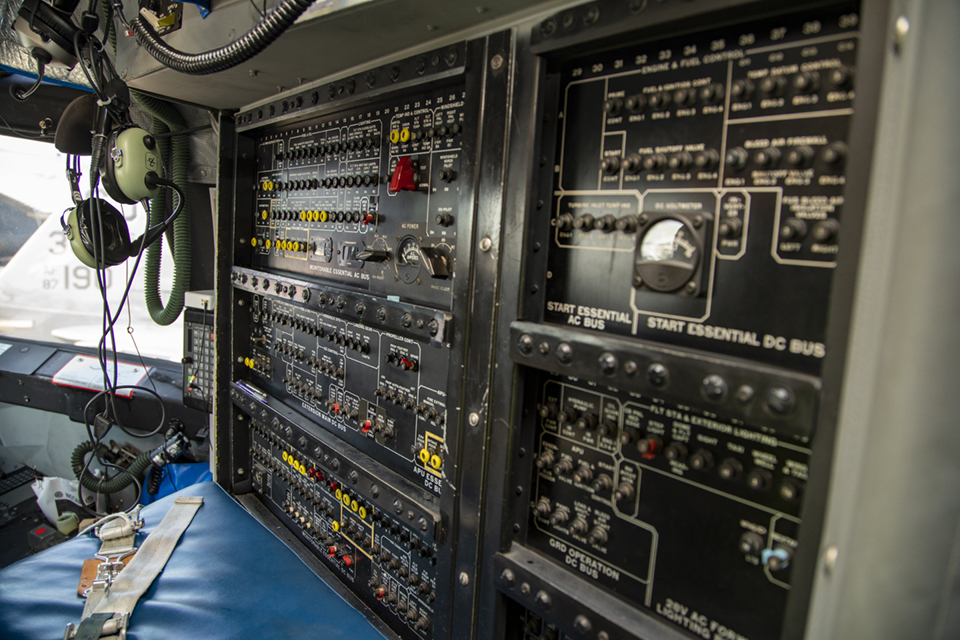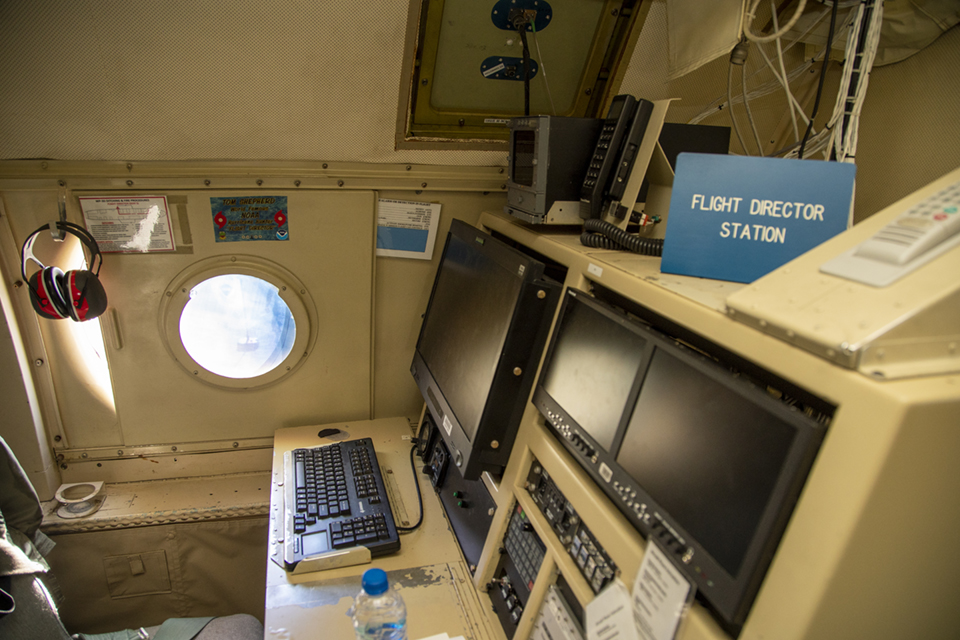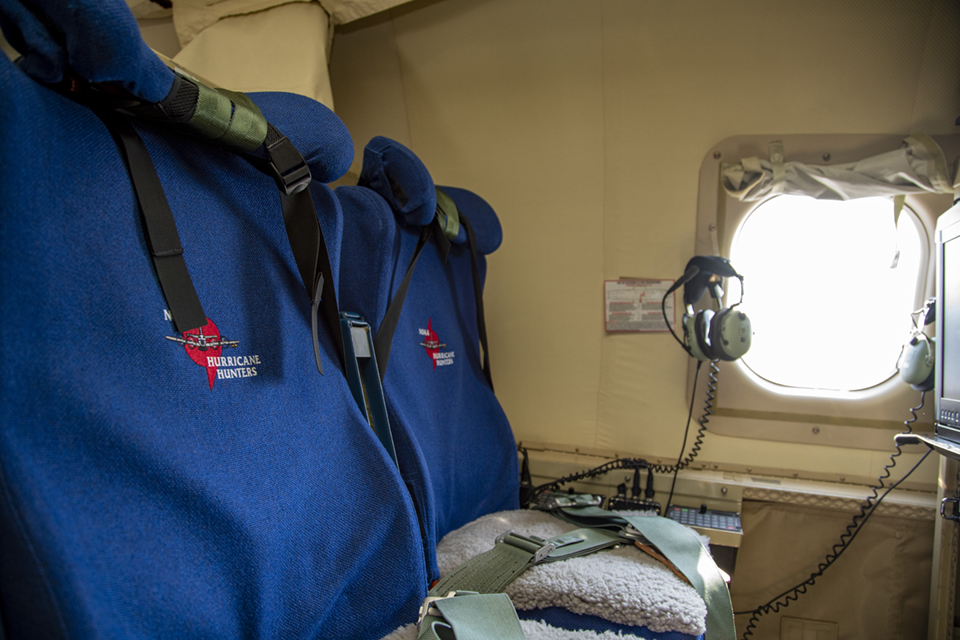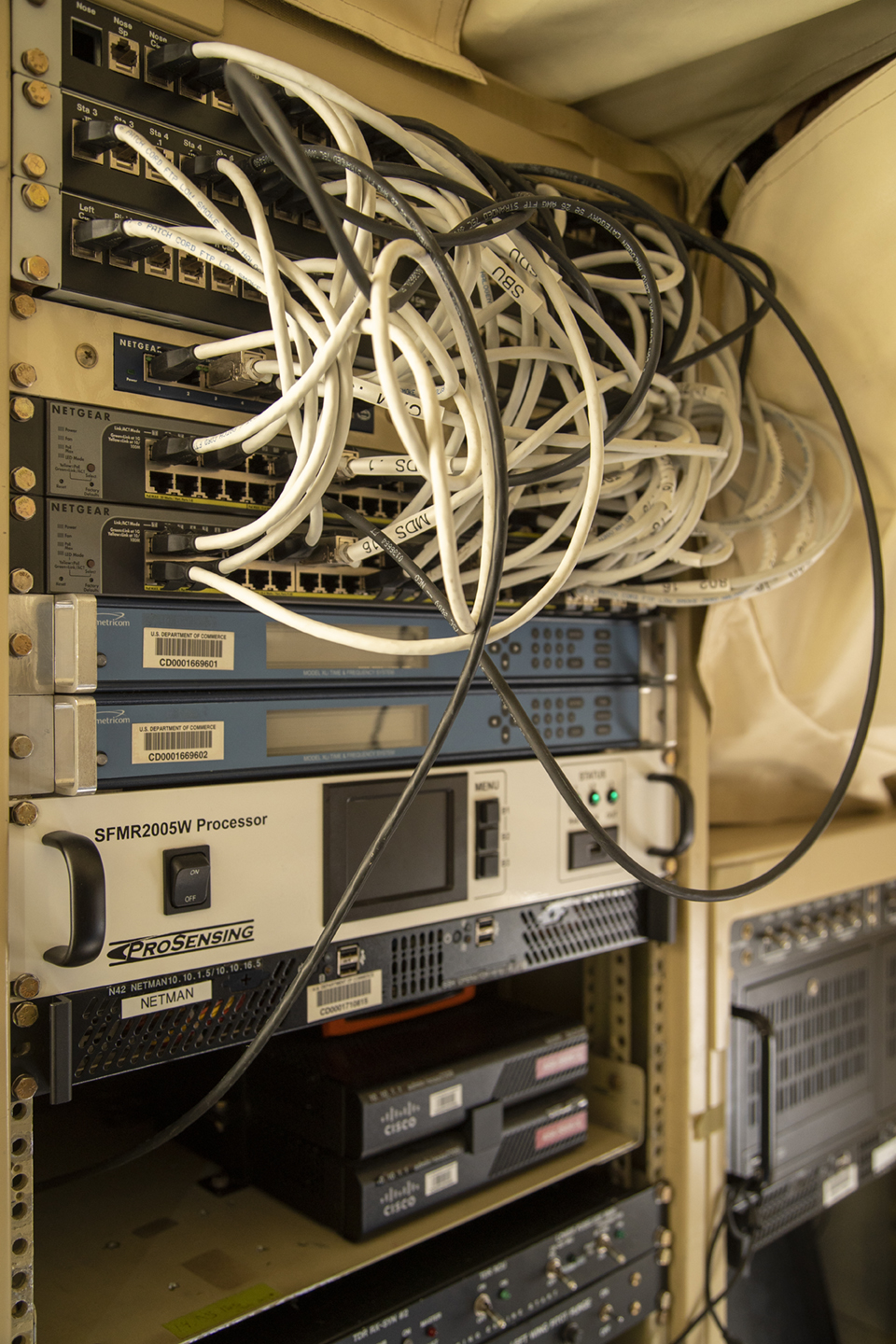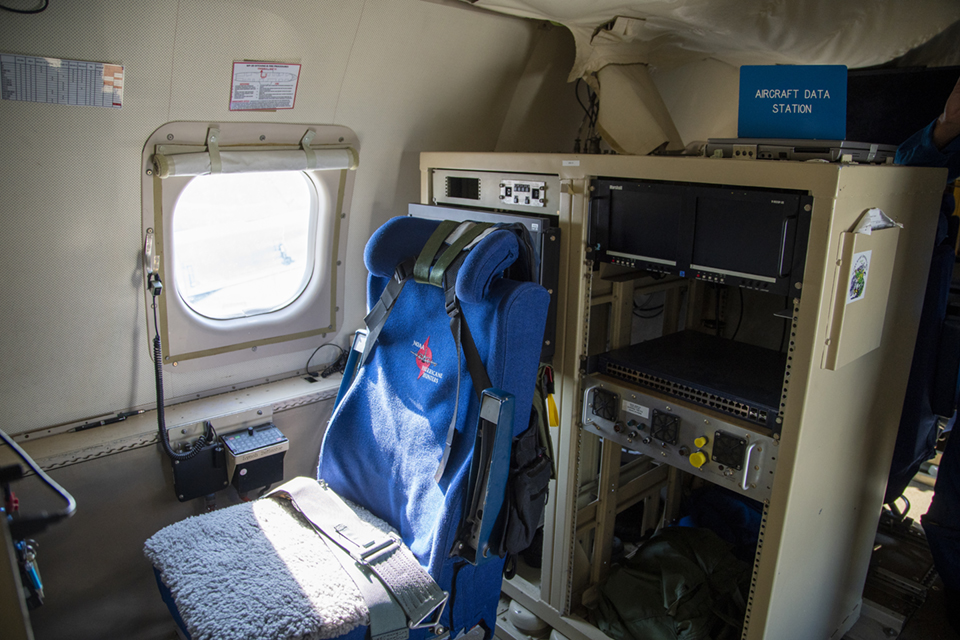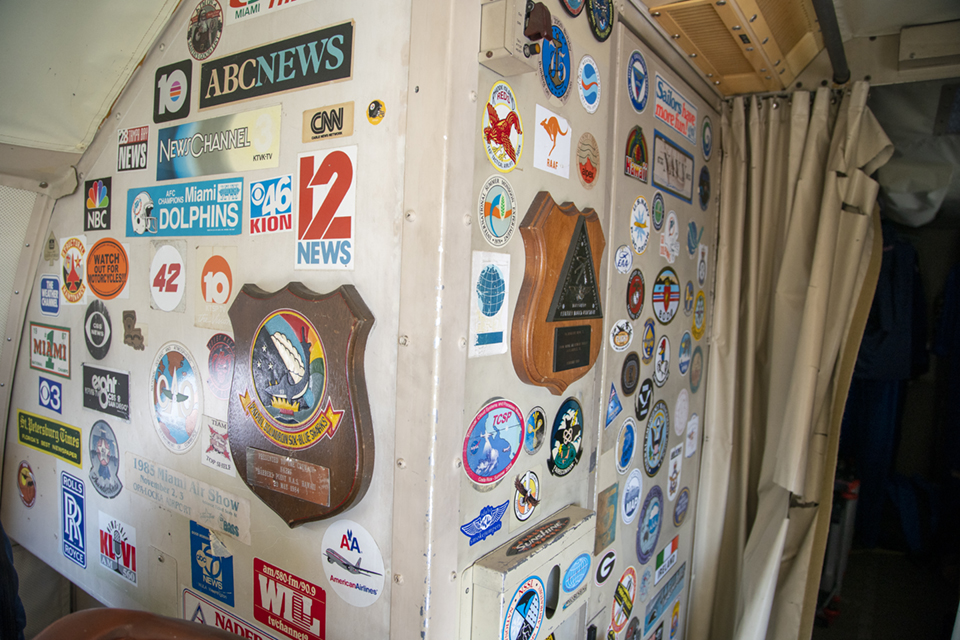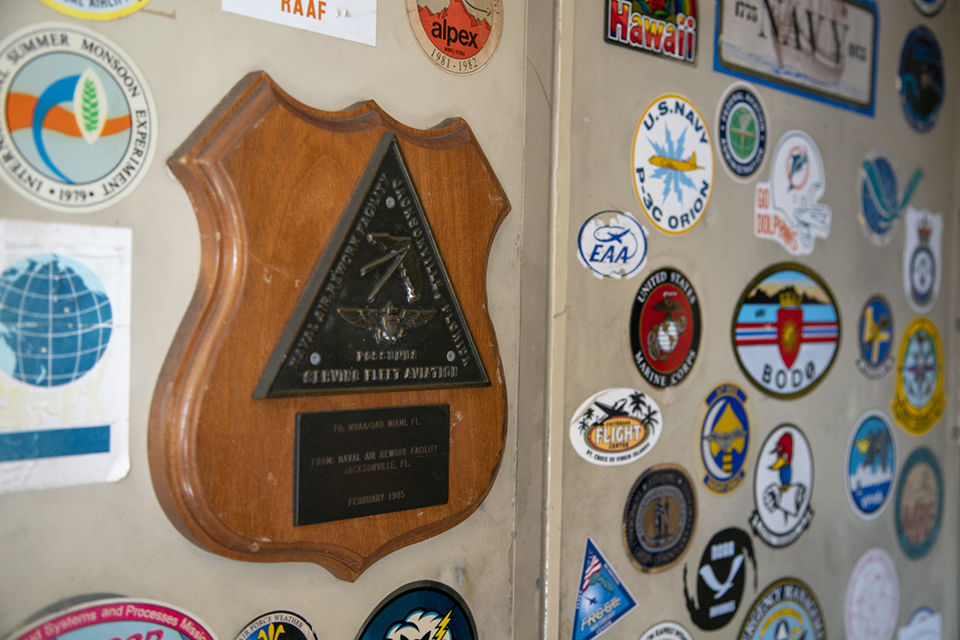P-3: On the Hunt for a Hurricane
By Kayla Floyd
July 28, 2019 - The National Oceanic and Atmospheric Administration (NOAA) Hurricane Hunter made its first Oshkosh appearance this year, as the Lockheed WP-3D Orion aircraft made its way to Boeing Plaza.
NOAA aircraft are a key part of hurricane forecasting by collecting data from the storm while flying into it. The work of the crew of the hurricane-hunting aircraft alerts areas of incoming storm threats and saves lives through the information they are able to provide. The information includes how intense a storm is or will be, and also where it will hit land.
Flying into a hurricane is an intimidating experience for the average onlooker, but for these crews flying through a hurricane surrounded by wind from all directions, rain beating down, and violent bursts of drafts, it's just a typical flight.
Lt. Cmdr. John Rossi, pilot of the P-3 and also in charge of flying the P-3 into Oshkosh this year, described learning to fly the hurricane hunter as "trying to take a drink from a fire hose; you've got to learn it quickly and there is a lot of information coming at you fast."
"It takes planning to fly into Oshkosh," he continued. "About a month ago we started our planning to get all the details and instructions."
Rossi has been working for NOAA for 12 years, and started flying 10 years ago. "I flew light aircraft for five years. Then I got selected to fly the P-3 for NOAA, and I've been doing the hurricane research flights for three years now. I am going into my third season."
NOAA's goal is to collect data that goes into weather warnings as well as information to learn more about tropical storms and hurricanes.
"I've flown everything from tropical storms, all the way to category 5 hurricanes," Rossi said. "Everything we do is done very deliberately and very intentionally. We have a plan in place before we go in to minimize risk and keep everyone safe. The goal of the research is to collect data inside the storm, and then use that data to learn about the storm and improve the forecast in terms of intensity and track-wise. So that is our goal. The better we get at that, the more lives we can potentially save. The idea is that we can tell a city like Miami to evacuate, as opposed to the entire state of Florida."
Safety is a major part of NOAA and especially the hurricane-hunting units, both in a macro and micro sense.
"There is big scale and small scale," Rossi said. "Big scale is that we start planning for every mission we do months before hurricane season, and we do it on an annual basis to review our plan of attack when we go into hurricanes. … On a small scale, when we are actually flying into a storm, we create a very tight pocket that we operate the aircraft in, meaning we fly track lines that are defined with our meteorologists, using the radars to help guide us through the storm and pick a safe path through it."
It takes practiced skill to maneuver the P-3 into hurricanes. Although Rossi is now in his third hurricane season, he said his first one was a lot to handle.
"I remember my first storm flight, the first time I flew into the hurricane eyewall and flew out of it," Rossi said. "I did a great job of keeping the wings level, which I was pretty proud of, but I remember I looked down at the altimeter and realized I had lost about 800 feet in less than five seconds. We get caught in these massive up and down drafts, and you have to keep a tight scan on all the gauges at one time, otherwise things like that can happen."
NOAA P-3's work does not stop at tropical storm research. It also offers support to many national and international research programs that look to collect data for meteorological and oceanographic purposes. Some of the research can include weather satellite data verification missions, air quality studies, and tornado research. While the work may seem risky, Rossi said the end goal makes it all worthwhile.
"It sounds crazy from an outside perspective, but we do it very deliberately and very intentionally," Rossi said. "The big-scale goal is to save lives. The more that we learn about the storms, the better the forecast can be, the more lives we can save. So that is the driving factor that keeps me doing what I'm doing."
